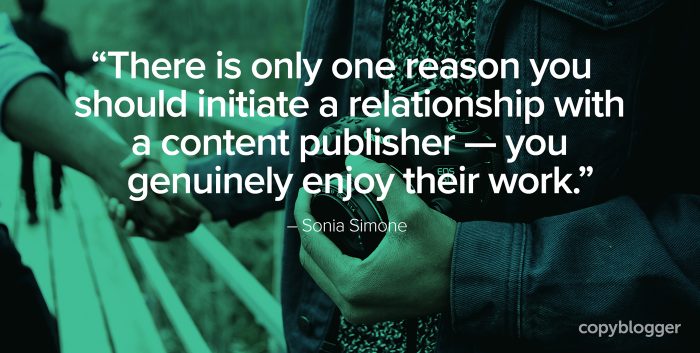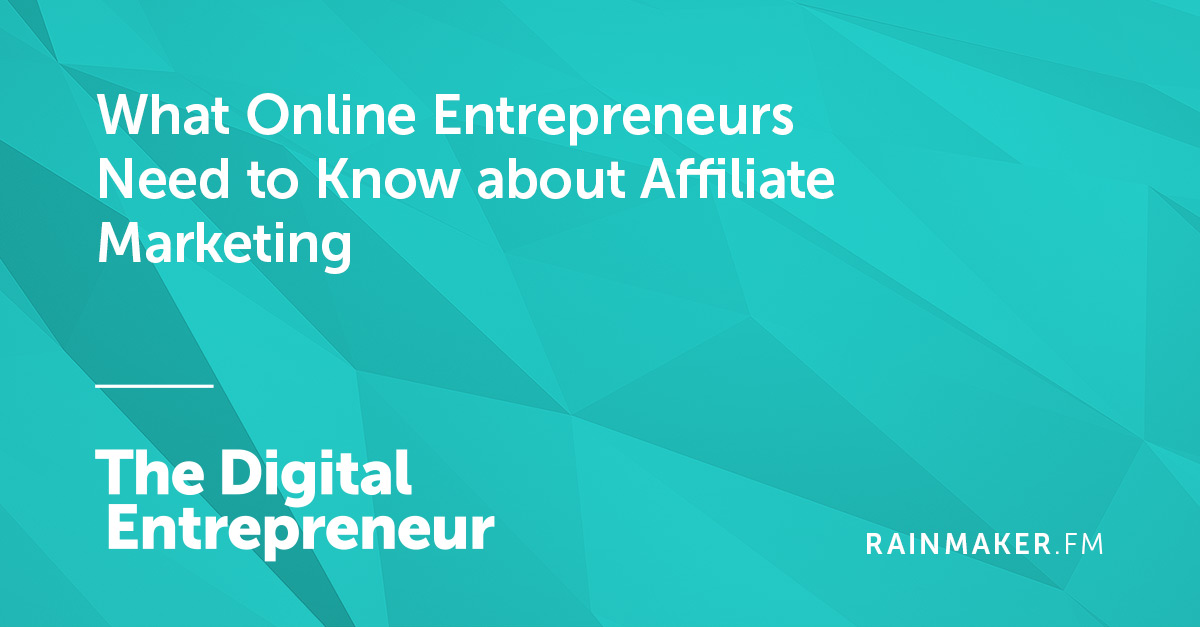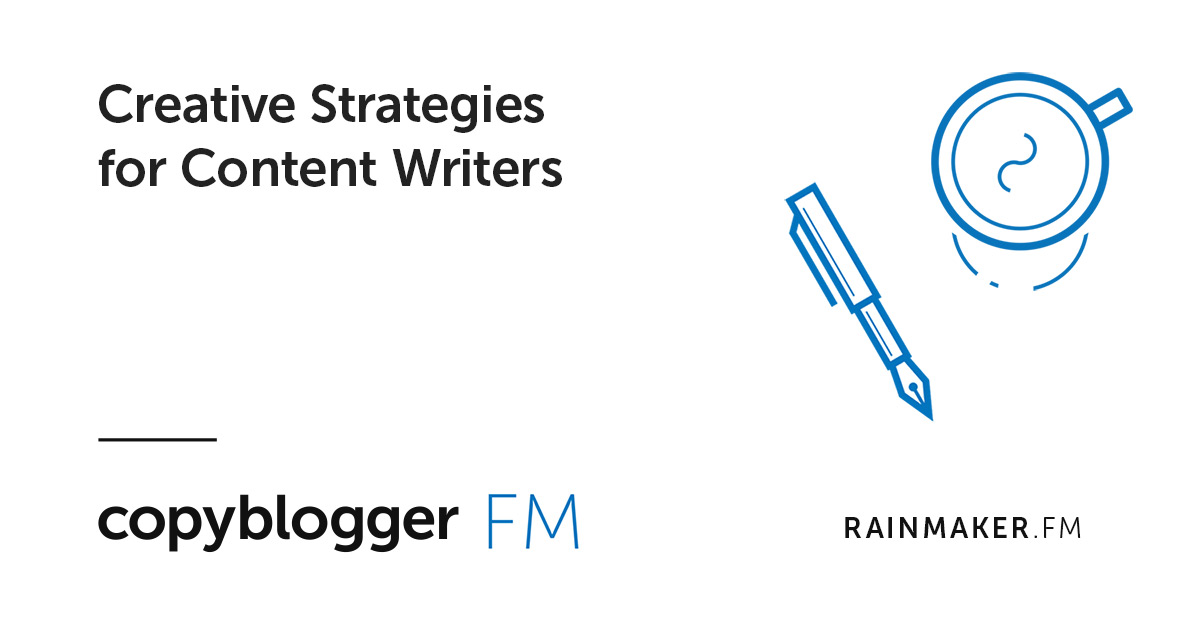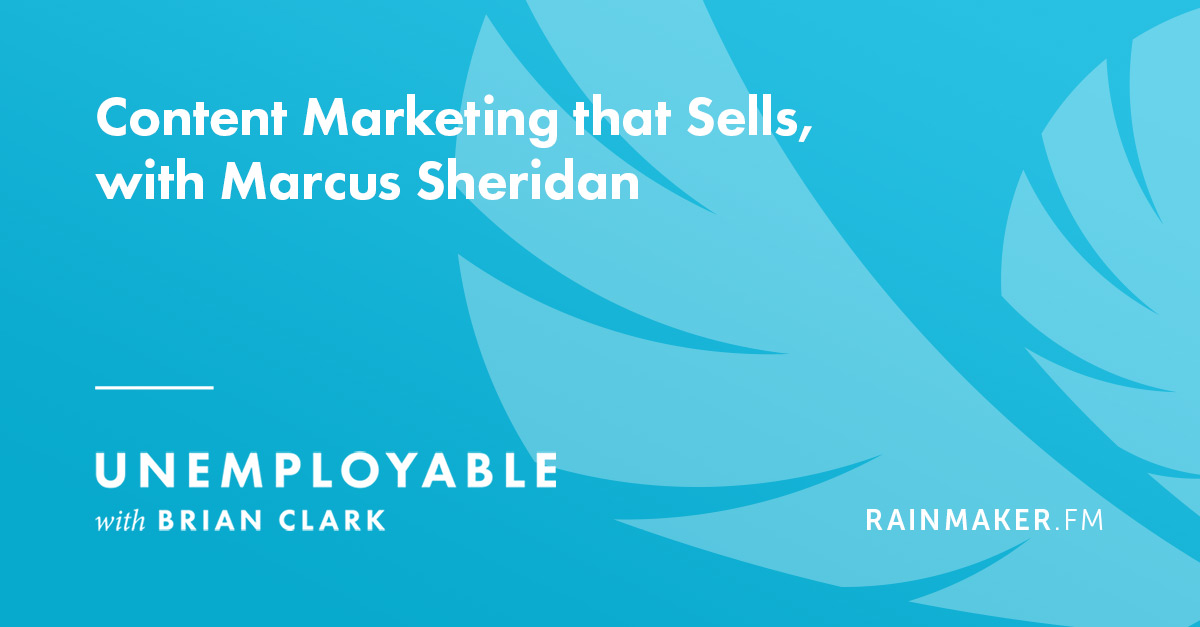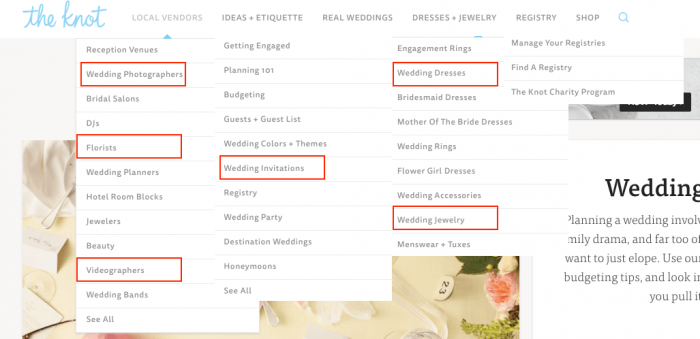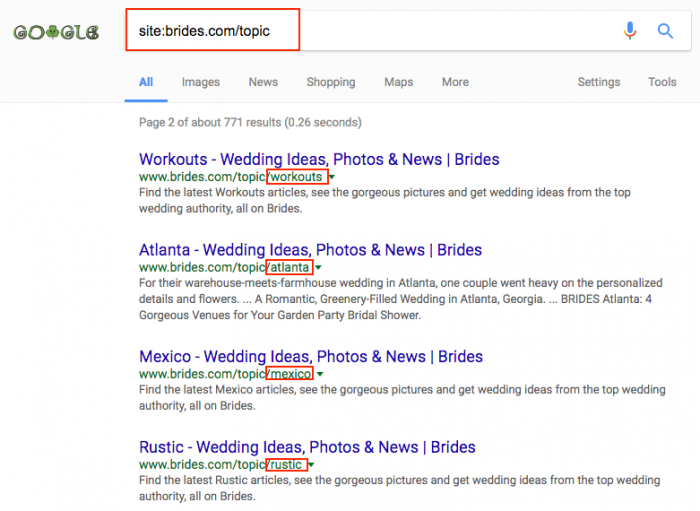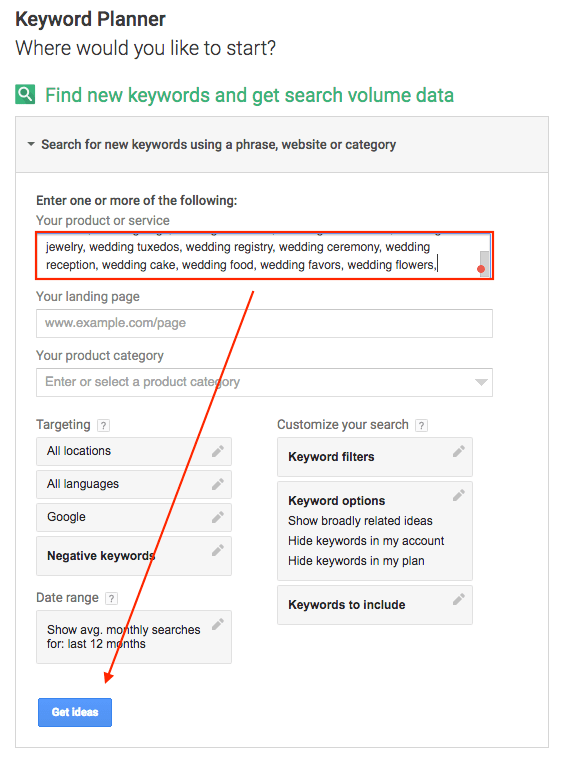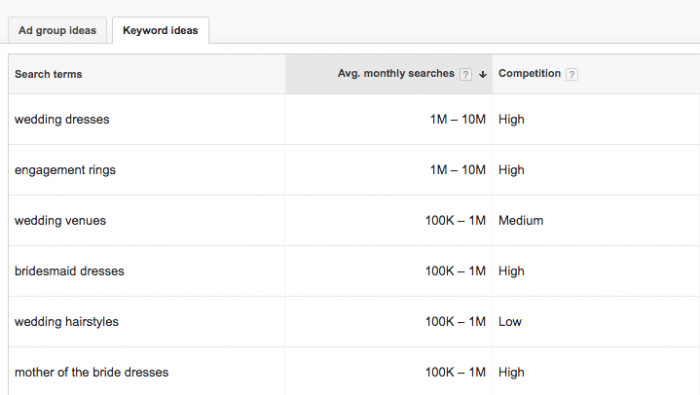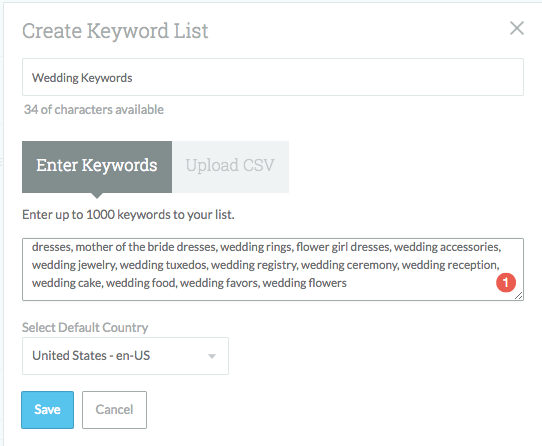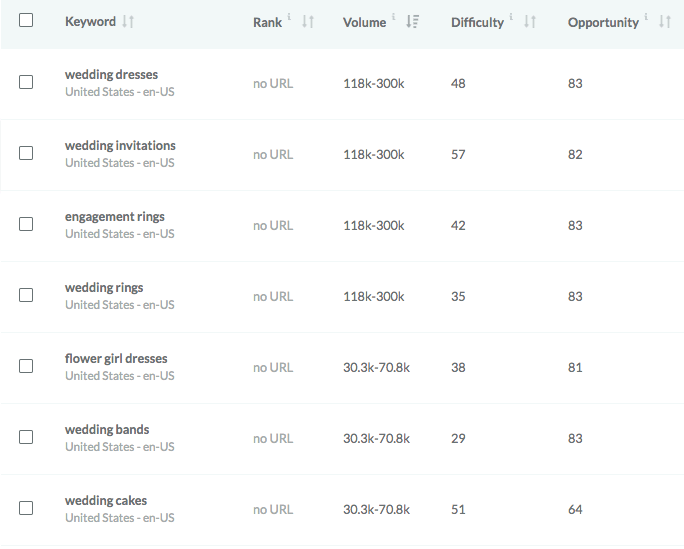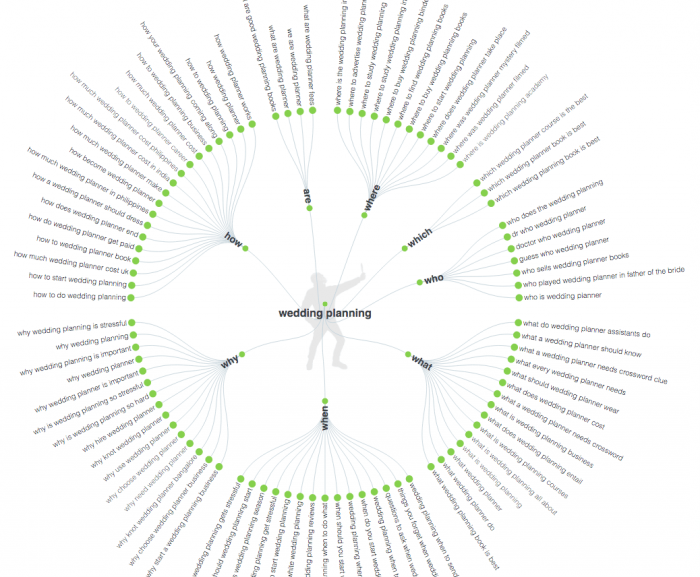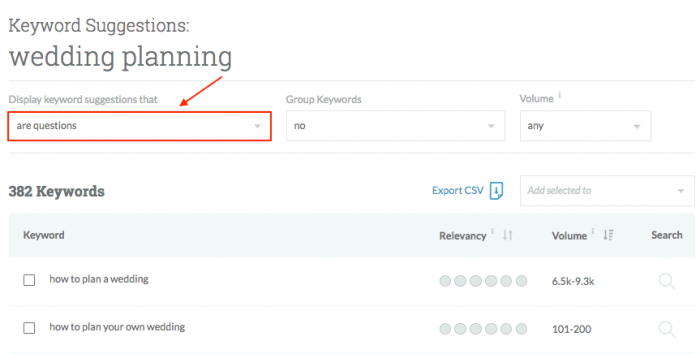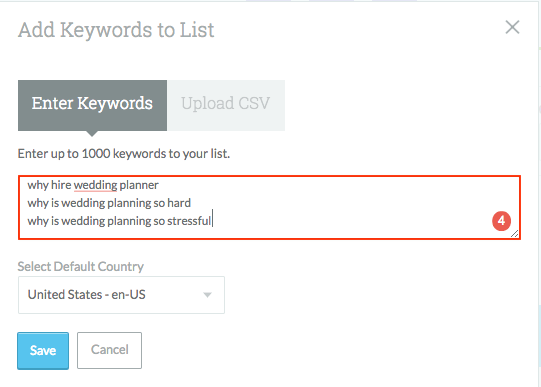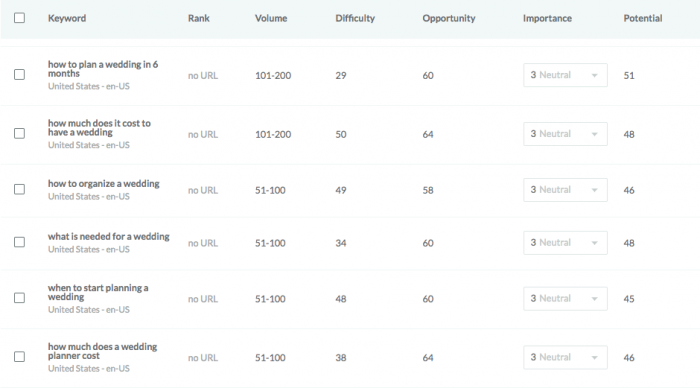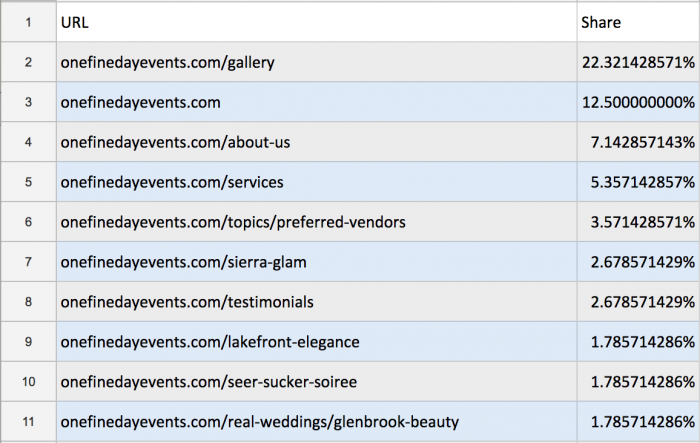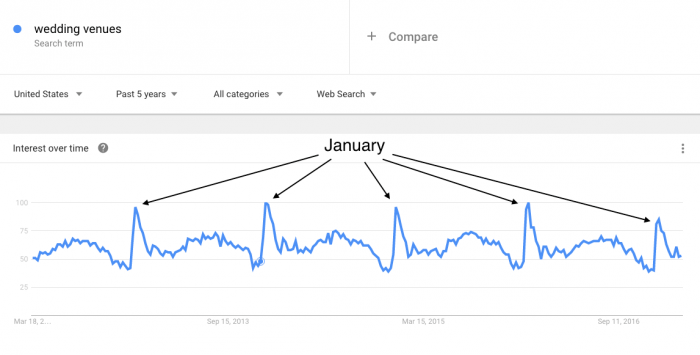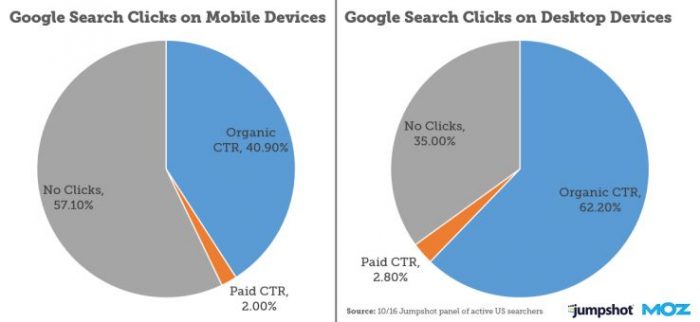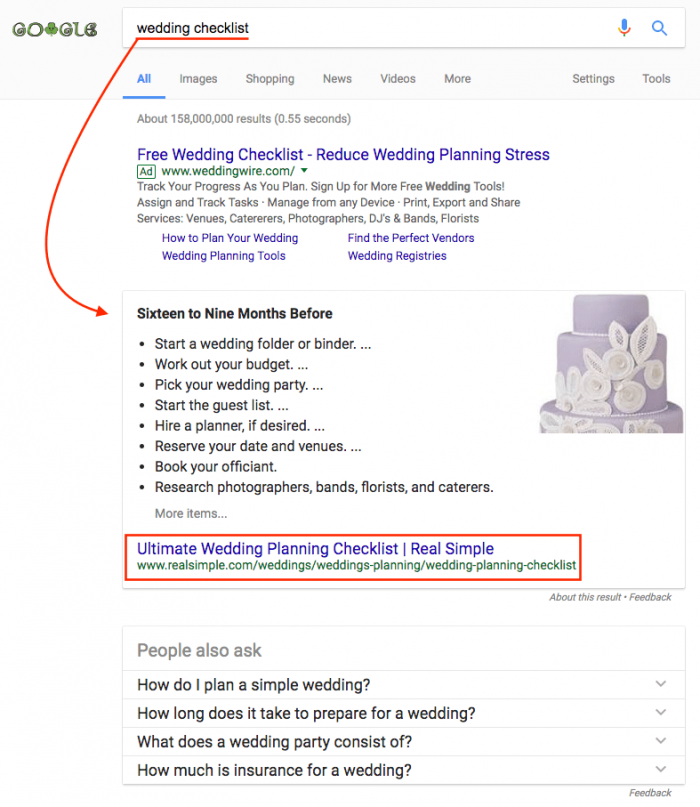 A rare post today. It looks a little further out into the future than I normally tend to. It attempts to simplify a topic that has more than it’s share of coolness, confusion and complexity.
A rare post today. It looks a little further out into the future than I normally tend to. It attempts to simplify a topic that has more than it’s share of coolness, confusion and complexity.
While the phrase Artificial Intelligence has been around since the first human wondered if she could go further if she had access to entities with inorganic intelligence, it truly jumped the shark in 2016. Primarily because we got our first real everyday access to products and services that used some form of AI to delight us. No more theory, we felt it!
I’m going to take a very long walk with you today. This topic has consumed a lot of my thinking over the last year (you’ll see the exact start date below). It’s implications are far and wide, even in the narrow scope that I live in (marketing, analytics, influence). I have so much to tell you, stuff I’m scared about, and so much I’m excited about.
Here are the elements I’ll cover:
Through it all, my goal is to make the topic accessible, get you to understand some of the key terms, their implication on our work, our jobs, and in a bonus implications on the future we are responsible for (your kids and mine).
Let’s go!
AI | Now | Local Maxima.
AI also seems so out there, so hard to grasp. Let me fix that for you.
Here’s a really simple example, easily accessible. Google Photos.
Humans took 2.5 trillion pictures in 2016. As you are trying to find that one special picture, it feels like all 2.5 trillion are on your phone! A real problem for all of us. Google Photos uses AI to solve this problem.
For example, I want pictures of Sushi… I simply type in Sushi… Boom!

Clearly I’m not your classic I love my food so much I must Instagram every meal person. :)
Notice nothing is categorized or tagged in the pictures above. Google Photos has to be able to recognize the content all on it’s own.
It is actually smarter than what you see above. When I type in the name of my son and Sushi, I get just one photo back! If I type in his name and the word beach, I get pictures of him on a beach… throughout his entire life! Photos can keep track of him from baby to today.
Cool, right? AI.
On your phone, try to search for people in your lives by name, by faces, combine their name with events/things/locations and you’ll be surprised at what the AI returns.
One more.
In trying to see how smart Google Photos really is, I wanted to try something harder… I typed in the query pain (French for bread)… and I got this…

This really delighted me.
On top is a Hong Kong Pineapple Bun, in the middle is an Indian Chapatti, and at the bottom is my wife’s Italian focaccia bread infused with our home grow rosemary. All, breads.
Think of how insanely cool it is that Google Photos can translate pain into bread and find all different kinds of breads that our family enjoys. From tens of thousands of photos in my album. Instantly.
(We’ll touch on this topic later but…) These are moments when I really worry that my job will soon become irrelevant. I mean, just imagine how hard it is to do what you see above, and everything I do is actually so much easier!
AI | Now | Global Maxima.
On that topic… My first true moment of worry about my professional future came in March 2016 when AlphaGo beat Lee Sedol, the unassailable Go grandmaster. It was believed, due to the immense complexity of the game of Go, that computers were at least a decade away from beating humans. The potential legal board positions in Go are greater than the number of atoms in the universe. AlphaGo not only had to compute all the possible positions to play, but to pick the best one it also had to have some kind of intuition and strategic thinking – a challenge beyond raw compute power.
The specific scary moment was on 11th of March. The kids and I were watching the livestream of game two from Seoul on our TV. During the game AlphaGo made its now famous Move 37. We were so confused. The expert commentators on TV thought it was a mistake. It is worth watching the minute of so of the video on YouTube.

It’s the black piece being moved next to the white one almost exactly in the middle of the board, to your right.
The game continued for another three hours, but it was over at move 37. Only AlphaGo knew that, it took a while for humans to come to that realization. It was, in the letter and spirit of the word, inconceivable by humans.
See, why it freaked me out that I might not have a career? Why do we need all these white collared jobs populated by people who will always be slower, more inefficient, and vastly less smart? Even a narrowly specialized AI entity in the short-term can replace their value in a professional environment. As we make progress towards Artificial General Intelligence (AGI), that entity will do 50 more than in addition to your one thing.
It is important that I share that being scared or freaked out can co-exist with excitement. You know the quote about the importance of being able to hold two opposing ideas in mind at the same time.
I am excited about AI, and perhaps beyond excited about AGI as it promises the scaled application of intelligence that will truly change the world in ways we can’t even begin to imagine. Consider Move 37. Maybe there is a Move 37 to solve Global Warming, and we simply can’t conceive of it. Maybe there is a Move 37 for fusion. Or perpetual motion. Or… Love. And, there has to be a Move 37 for politics. Consider how incredible it will be that we’ll have AGI around to solve these impossible problems.
I am also excited because I believe that, at least as far out as I can see, the human brain and the human heart will be valued – we will identify new things to value, it just won’t be Digital Marketing Evangelist. Perhaps you now see why I’ve pivoted my career to Storytelling with data over the last couple of years. :)
I realize there are people throwing up red flags, warning us. They are smarter and vastly more knowledgeable on this subject than I could ever hope to be. We should listen to them carefully. I’ve watched at least 30 hours of lectures on YouTube on this topic.
My personal reaction to AI emanates from three things:
1. There really is no turning back. Humans push forward.
2. It is impossible to imagine what 2057 will look like. Our current red flags are sourced from what human means today, what works means today, what our relationship with technology means today. None of this might be relevant by then (even less relevant by 2100).
3. Between 2057 and now, I humbly believe that AI will function to extend our own intelligence, fill our gaps, and will find solutions inconceivable to humans to intractable problems (see above)
My personal strategy: Understand reality. Invest in continuous learning. Adapt. Add new/different value. Rinse and repeat.
The most conservative estimate is that AI driven changes are expected to replace 25% of jobs across the world, by 2026. My goal: Stay ahead by solving new challenges.
If you’ve thought about it, please share yours in comments below.
Now that we have the basics out of the way, let’s really understand what this thing is.
What the heck is Artificial Intelligence?
People tend to use these phrases almost interchangeably: Artificial Intelligence (AI), Machine Learning (ML) and Deep Learning.
It does not help that there is genuine ambiguity about each of them as we are still in the early evolutionary stages.
Let me share a simple definition that helps me understand each phrase.
AI is an intelligent machine.
ML is the ability to learn without being explicitly programmed. Currently, ML is the most exciting application of AI.
Deep Learning is a specific ML technique.
Most Deep Learning methods involve artificial neural networks, modeling how our bran works. At the moment Deep Learning forms the basis for most of the incredible advances in Machine Learning (and in turn AI).
A pinch more about Deep Learning as it plays such a critical role in all the current AI excitement.
There are some who believe that anything modeled on the human brain, like Deep Learning, will be limited in it’s intelligence, that it will inherit the limits and flaws that our intelligence possesses. This will then cap what an AI might be capable of. An additional problem to worry about with Deep Learning is that we might not have massive training datasets for every problem we want to solve (mandatory for Deep Learning).
Hence, while Deep Learning is rightly getting lots of focus and affection at the moment, I’m excited that some outliers, :), are investigating other techniques. One of my favorite alternatives is Counterfactual Regret Minimization.
In summary: Deep Learning is a specific Machine Learning technique which currently powers the most exciting applications of Artificial Intelligence.
Now you know how to use each phrase correctly. :)
Machine Learning | Marketing.
I use the phrase AI sparingly, preferring Machine Learning instead since it is the primary technique that is powering the changes you see in our context.
You are seeing many applications of Machine Learning being applied to Marketing. Here’s a collection of ideas to push your thinking.
The one that I’m most excited about (because we suck so much at it) is the ability to personalize content delivered via our ads. Right message for the right person.
I am also impressed with the advances ML is powering in smart bidding (particularly in AdWords). You set your desired outcomes (target CPA, ROAS, enhanced CPC) and let intelligence help you get to your goals – sans human micro fidgeting! Right message for the right person at the right time.
Broadly speaking it is important to internalize that humans are going to get out of the campaign business (campaign management, content, offers, manual spreadsheet massaging, handful of keywords/pages/whatever focus, etc.).
Here’s one illustrative example. Most manual touch (even with a tool) search campaigns take into account three or four signals. Keyword. Time of Day. Location. Something else. Even the most “automated” approaches from your advanced agency will use a handful more. Yet, an entity like Google or Facebook has hundreds (not a metaphor) of signals it can use to deliver the right ad. There is no way any manual approach can solve for this. Machine Learning to the rescue.
Oh, and you can deliver the right message in a billion queries world (check the size of your current search campaigns for a contrast).
Let me bring some of this home by sharing an actual example from last year.
A large hotel chain wanted to solve this problem: 90k travelers are stranded every day in America across 5,145 airports. How can the hotel ensure that they show up at the right moment for all these people? The solution was to leverage real-time signals like bad weather, flight delays at 5,145 airports, and other such data, combine that with ML powered algorithms to automate ads and messaging in the proximity of local airports. All sans human-control. Result? 60% increase in bookings in targeted areas. ML + Automation = Profit.
Oh, and of course if your company’s data is not limited (and you have solved identity, please, please solve identity) you can leverage ML to do the above campaign across Search, Display and Video. AND (are you sitting down?) rather than guessing how much credit to give each marketing strategy from hundreds of thousands of customer touch points, ML powered attribution can magically analyze every individual’s journey and automatically recommend shifts to your media budget! O. M. G.
This is not some future fantasy. This is last year. Using Machine Learning.
Does it give you a sense for how far behind your company might already be?
Consider the implications of ML on your email marketing program. The dataset you have contains every piece of data about all the people on your mailing list, all the content that has ever gone out, every click they have every interacted with, every product you have, every product’s lifecycle, purchase cycle, attach rates, every outbound click, unsubscribing rates (and on and on) across all of your company history. Can you create the perfect email campaign for every person to maximize their happiness and your profit, always?
With ML, you can imagine that this is just a mid-sized difficult problem to solve.
I’m unaware of any ESP at the moment who is doing this (that does not mean it is not happening). What I’m confident of is that it is coming. So, if you are in the email business as a vendor, as an agency, or as a company…. You should be planning to live in that world now. You should be pushing your people, your agency, your vendor into that world. Now.
One key thing that stymied my efforts, and likely your ML efforts, in 2016 was Identity. Solving Identify will allow us to join isolated pools of data, give them a stronger purpose. While we all work to do that (and it really is your problem to solve primarily and not a vendor’s), it is important to realize that each marketing channel has gotten so much more advanced in being able to identify a singular human on it’s own platform. Yes, a silo but so much better than 2015.
What is great about this is that you can take one important pool where you’ve solved Identity already, your customer data, and all the signals you get from customer scoring, propensity modeling, past purchase behavior, lifetime value and other orgasmic goodness you already have, and combine it with the Identity signals from your marketing platforms to solve some very tough problems you have today.
Your kilobytes of golden signals merged with the gigabytes of customer and intent signals in their terabytes of data. You throw in some Machine Learnings into that and it truly is magic.
Another example from last year.
For a consumer electronics company, rather than engaging with everyone and slathering them all with a spray and pray generic message… The strategy deployed was to classify the existing customers, take into account their predicted value to the company, their past behavior, current expressed intent-signals, the predicted value to the company from that signal, and context the human is in. All this data, across tens of millions of identified signals to deliver a deeply unique message to humans that mattered the most – at scale. A 30 point increase in conversion rate. Thirty points.
And, this is not unusual. I’m thinking of one more example I’ll share with you in the future about an insurance company and being able to combine audience signals with machine learning to deliver a 58% increase in conversions of people who had the same attributes as their top 10% most profitable customers. Insane, right?
All the examples above, all the stories above, are not future looking. They are all real things you can do today, and results we delivered last year. That is how far along marketing already is in its ML journey. I cannot even begin to tell you how pumped I am about the changes coming this year.
All of the above is still at least to a degree human assisted. I expect, looking forward, that the human assisted part will peel off. Sooner rather than later. It is important that you consider this as you plan your career over the next three years. If you want to know what I’m doing, search for the phrase “my personal strategy” above.
For a little bit, I expect that some humans will still be required to fill data gaps (Identity!), humans will still be required for imagining brand copy or coming up with centerfold creatives. But anything that is done often in a repeatable manner is already headed to be sans human.
I really cannot stress this enough… If your marketing’s foundation is to keep adding more hamsters to run on wheels to achieve scale, you are doomed. Even if you find enough hamsters, it is critical to realize the game has changed.
While it is a little sad that our primary job as Marketers won’t be to press the relevant buttons and twist the relevant knobs on the machine, I am happy that in the end the winner is the human at the other end of our marketing. More relevant messages (if not perfectly relevant), at precisely the right time (and perhaps delivered just once!), to the human in the most meaningful moments.
Win-Win-Win.
Yes. I do have a sense for how disruptive the implication of all this change is for me, for you and for our co-workers at a deeply personal level.
Machine Learning | Analytics.
This story is much more straightforward. More and more humans are going to be transitioned out of the business of analytics. There won’t be any need for them. The pace will accelerate over the next handful of years.
We are needed today because data collection is hard. So, we have an army of implementers.
Most humans employed by companies were unable to access data – not intelligent enough or trained enough or simply time pressures. So, we have an army of glorified data regurgitators. I kid. I mean Analysts. They send out reports and dashboards. They are in the business of answering known knowns.
Some companies, some of the times truly want strategic questions answered, and they hire a small platoon of Analysis Ninjas. Most of the times they are in the valuable business of answering the known unknowns, they aim to get to the priceless unknown unknowns.
[Sidebar: If you don’t know these three phrases, please watch my short talk: A Big Data Imperative: Driving Big Action.]
Insane as it seems like, data collection should get sorted out in the next few years. As close to perfect data, with little to no instrumentation, because it will all already be built in.
The current crop of Analytics tools are getting better and better at the known knowns, the process of disintermediation of the humans doing that work is only going to accelerate… And then that work will disappear. If you are solving for the known knowns, and ML can do that a million times better than you AND can take the necessary action, why are you or I needed in the data puking business?
If you are a report writer in your company most of the time, ponder the above thought. Here’s the great news: Time to move up the food chain or move to a different chain. Hurray!
The Known Unknowns are going to be a source of job security for the next two or three years (perhaps less on the Marketing side). As ML creates new possibilities whenever people give you a finite, repeatable question, for which they don’t have an answer, ML will ask: Why do you need the answer? Why don’t I just go take the action for you?
Ok, it literally won’t say that, but for predictable questions there are predictable actions to be taken. Why can’t we automate them and infuse them with intelligence?
The barrier to this is that your Analytics vendor is in a silo, your campaign vendor in their own, your CMS in it’s own, your mobile anything in it’s own. None of them caring to extend and collaborate. Still, a solvable problem. And, if you read my marketing stories above carefully, this is already solved in those examples. So, there is a blueprint.
If you are in the business of answering unknown unknowns, you have job security for another five years or so. This is simply because analytics vendors are still not taking the ML revolution seriously. Not at Adobe, not at Google, not at SAP, not at IBM. There are small efforts. Click on link called Assistant in the left nav of the Google Analytics app, or click on the link in Analytics that says Data Driven Attribution. They should you hints, even as they leave the action entirely on the human. I think we need our version of the Manhattan project. Hopefully analytics vendors will pivot in a big way – why solve the pressing, surely going to go away in two years, problems of today?
Here’s the higher-order-bit…. Anthony Goldbloom phrased this beautifully: Machines will excel at frequent high-volume tasks, humans can tackle novel situations.
In Analytics and Optimization, almost everything we do today would fit in the category of frequent high-volume tasks. It puts pressure on the longevity of our jobs. Until complete disruption arrives, try to migrate your job’s focus on the unknown unknowns – that is still a novel situation.
Analytics was a means to making smarter decisions. I am glad analytics as we know it will go away. It will be automated, scaled, faster, more delightful and deliver higher impact.
Over the last few years you’ve seen a huge infusion on this blog of business strategy, of influencing shifts in direction, of trying to fill gaps in people’s thinking where no data exists, of being able to function in ambiguity. All of these, until we get truly Artificial General Intelligence (AGI), will still continue to be a source of gainful employment. Hence, that’s the Analyst of the near-future in my humble view.
Artificial Intelligence | Future | Kids.
I don’t normally talk about this, but in context of this discussion I wanted to be a bit more open.
All this time I’ve spent on AI, on the acceleration of change, on the massive disruption that’s coming, it got me thinking about my kids and the world I have to get them ready for.
Two thoughts to share with you, to spark your imagination in case you have kids or you play an influential role in a child’s life.
The Strategic.
Our kids are young, hence almost nothing they are learning in school or they’ll learn at University will really get them ready to live in the world they’ll graduate into. And. What scares me is that I can’t even predict what that world will be like. What will work actually mean? I don’t like being helpless, and hence I gave some thought to what key skills / attributes could I possibly want them to have that will help them to be ready to tackle what might be coming.
We choose three that might serve them well:
1. Emotional resilience. (A handful of things in there. A strong emotional core, in the face of challenging situations – love, work, insane people etc. The ability to be happy – I'm paranoid about this one.)
2. Recognize, and exploit change. (Hardest thing for a human to do, we like status quo. I'm thinking of how to give them a portfolio of skills, rather than just be happy they are an engineer or a teacher or a plumber.)
3. Discipline. (Be laser focused, ability to get things done, ignore distractions – not the same as focus -, a certain amount of ruthlessness in getting to a pre-determined valuable end.)
There are more of course. One that came close was the ability to always know one’s unique strengths. These three felt right to us.
I invite your suggestions via comments below.
The Tactical.
My son has a propensity towards computer science. Even at his young age he programs in Java, he has learned Perl, JavaScript, and other web technologies. He is working on his second Android app. While all that, and his Sunday tutoring at Stanford, is helping stretch his brain, training him to think in clever ways, he will start his professional life, less than a decade away, with no jobs where those skills are going to be required.
Because he is headed into this specific direction, we are pivoting our strategy for him. We are going to prepare him for the world that will be well here, by the time he is in his chosen field of interest. The team at Facebook had a very nice article that collected their guidance. It is going to help inform my son's strategy.
Here’s the relevant excerpt from their blog post:
How do we prepare for jobs that don’t yet exist?
If you’re a student:
+ Math and physics classes are where one learns the basic methods for AI, machine learning, data science, and many of the jobs of the future. Take all the math class you can possibly take, including Calc I, Calc II, Calc III, Linear Algebra, Probability, and Statistics. Computer science, too, is essential; you’ll need to learn how to program. Engineering, economics, and neuroscience are also helpful. You may also want to consider some areas of philosophy, such as epistemology, which is the study of what is knowledge, what is a scientific theory, and what does it mean to learn.
+ The goal in these classes is not simple rote memorization. Students must learn how to turn data into knowledge. This includes basic statistics, but also how to collect and analyze data, be aware of possible biases, and to be alert to techniques to prevent self-delusion through biased data manipulation.
+ Find a professor in your school who can help you make your ideas concrete. If their time is limited, you can also look toward senior PhD students or postdocs to work with.
+ Apply to PhD programs. Forget about the “ranking” of the school for now. Find a reputable professor who works on topics that you are interested in, or pick a person whose papers you like or admire. Apply to several PhD programs in the schools of these professors and mention in your letter that you’d like to work with that professor, but would be open to work with others.
+ Engage with an AI-related problem you are passionate about. Start reading the literature on the problem and try to think about it differently than what was done before. Before you graduate, try to write a paper about your research or release a piece of open source code.
+ Apply for industry-focused internships to get hands-on experience on how AI works in practice.
Summary: Loads of Advanced Math, Engineering, Neuroscience with a pinch of philosophy, and loads of analytical thinking.
If you have a child in your life who is headed in the "IT" / "Computers" (or honestly any job that will come in five years), please consider this valuable guidance.
Artificial Intelligence | Worry about Humanity.
I can’t cover AI without at least touching on this thought:
AI is going to wipe out humanity. To a super intelligence that is in control of the planet, we will appear to be the equivalent of how ants appear to us – mostly pests who get in the way, even as we express passing appreciation for their “primitive intelligence.”
It is important to understand two incredibly valuable definitions that I’ve paraphrased from the brilliant Yuval Noah Harari.
Intelligence is the ability to solve problems.
Consciousness is the ability to feel things.
People who express the thought above mix the two things.
Absolutely no one can predict the future a hundred years out (I encourage you NOT to Google Mr. Harari’s prediction about what he sees happening 300 years out). But, everything we know at the moment, everything we can see peeking into the future to the best abilities of our best thinkers, indicates that we are solving for Intelligence, there is no current path to Consciousness.
It does not mean we will keep control of the Super Intelligence or that we or a Super Intelligence won’t want to solve for Consciousness (honestly, why would it?).
It is important to understand the difference, if only to be able to see through the hysteria and think cogently.
Speaking of thinking cogently, if you want to have a broader imagination related to AI’s potential to be valuable and disruptive to the current order, here are a clutch of articles…
NTT Resonant, a Japanese tech company, has trained an AI to give love advice to troubled hearts. This is not a lame chatbot with very short answers. Oshi-el can take in complicated pages long questions, which often family and other context, and responds with answers. Not perfect, but so incredible even today.
Health is a space that is seeing some exciting progress. 415 million (!) people are at risk worldwide and you need a medical specialists to detect it – specialists who are not available in many parts of the world. Google’s algorithm, leveraging ML and Computer Vision, is already on-par with Ophthalmologists in being able to detect Diabetic Eye Disease. There is more work to be done, but how cool that so many lives can be saved. And, this is one of so many health related efforts leveraging ML.
Augmentation is perhaps the most optimal way to think about the near-term future. The world will find some use for what we are good at, and we’ll use AI for what it is good at. Maurice Conti presents a cluster of ideas that are in the play today that demonstrate the incredible inventions of intuitive AI. Mind-blowing what is already possible.
It is not clear what the future beyond the next 50 years will bring. I hope the articles above give you clues.
Please be curious about AI and its implications on your job today, and on the generation you are helping prepare for the future. Now's the time to pivot.
As always, it is your turn now.
Are you leveraging Machine Learning in your job or as a personal curiosity? If you’ve already downloaded TensorFlow, what are you doing with it? Is a piece of your marketing strategy leveraging ML powered options Facebook or Google are making available to you? If you had to give advice to an Analyst to get ready for an AI-first world, what would it be? Have you thought of the implications of all this change on your children? Any tips for me and my kids?
Thank you.
Artificial Intelligence: Implications On Marketing, Analytics, And You is a post from: Occam's Razor by Avinash Kaushik

from
http://feedproxy.google.com/~r/OccamsRazorByAvinash/~3/0tdfC4BtvPs/

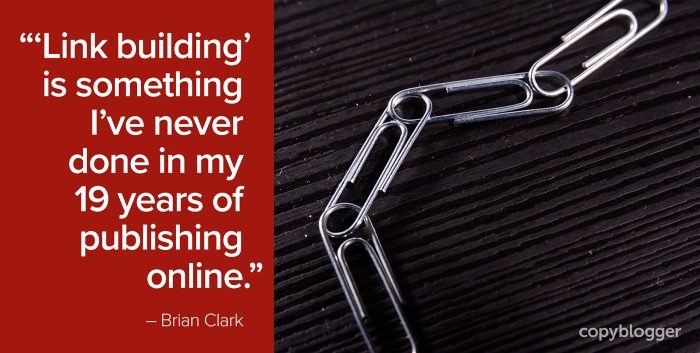 3 Strategic Ways to Get Links to Your Website
3 Strategic Ways to Get Links to Your Website Podcasters: Stop Looking for an Audience (and Let Them Find You)
Podcasters: Stop Looking for an Audience (and Let Them Find You) 6 SEO Friendly Tips to Improve Site Speed on WordPress Blogs
6 SEO Friendly Tips to Improve Site Speed on WordPress Blogs On Grammar, Usage, and Not Being a Great Big Jerk
On Grammar, Usage, and Not Being a Great Big Jerk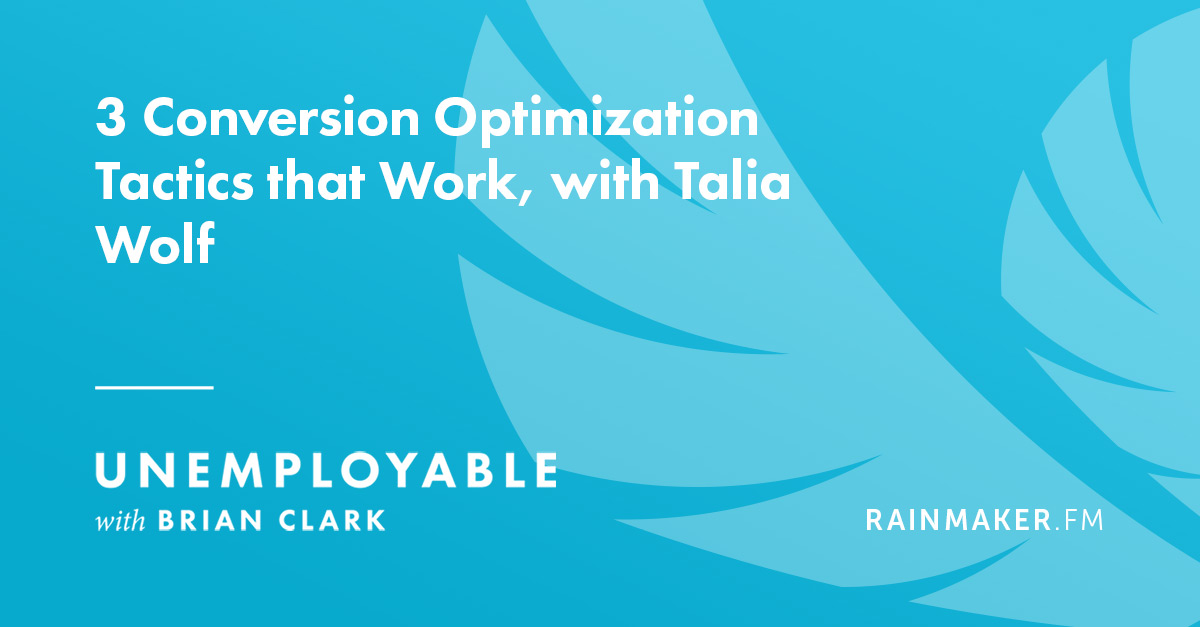 3 Conversion Optimization Tactics that Work, with Talia Wolf
3 Conversion Optimization Tactics that Work, with Talia Wolf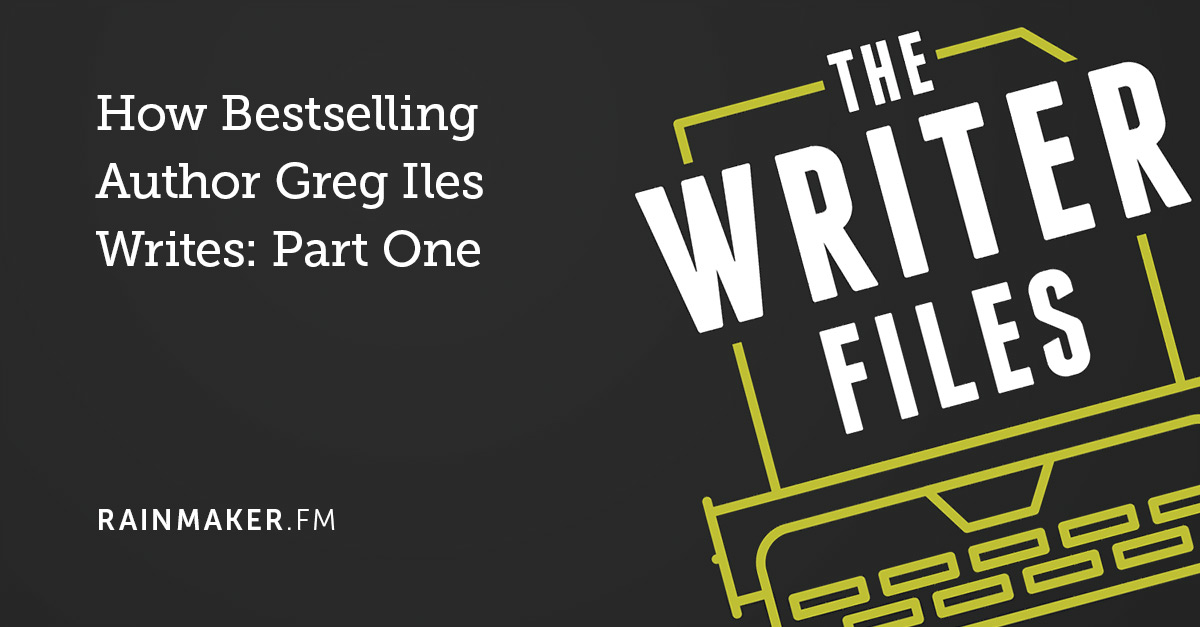 How Bestselling Author Greg Iles Writes: Part One
How Bestselling Author Greg Iles Writes: Part One Sponsorships or Affiliate Marketing: Which Is Better for Your Podcast?
Sponsorships or Affiliate Marketing: Which Is Better for Your Podcast?






